Panasonic TX-65EZ1002B Review
Panasonic TX-65EZ1002B
Panasonic's flagship OLED is stunning and great with colours
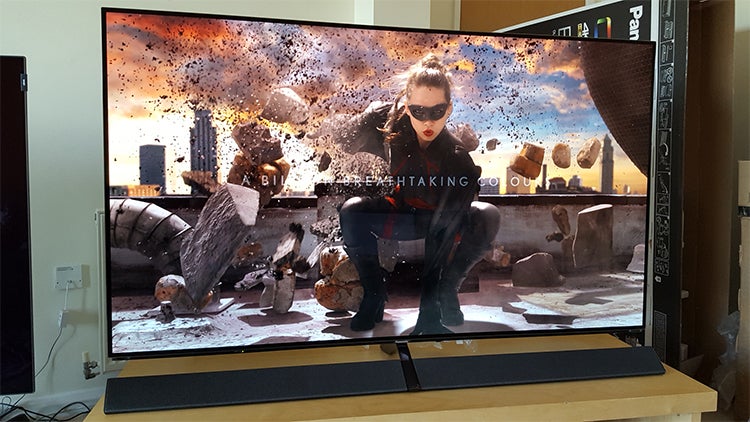
Verdict
Pros
- Professional-grade colour accuracy
- True blacks with outstanding shadow detailing
- Wide viewing angles
- Very low input lag
Cons
- No Dolby Vision support
- More expensive than rival 2017 OLEDs
Key Specifications
- Review Price: £6999.00
- Self-emissive OLED display technology
- Ultra HD Premium & THX 4K certifications
- Technics-tuned Dynamic Blade soundbar
What is the Panasonic TX-65EZ1002B?
After taking gap year in 2016, Panasonic rejoins the OLED TV fray with the EZ1002. It hopes to repeat the success of its first OLED, the critically acclaimed Panasonic TX-65CZ952 from late 2015.
The market has moved on quite a bit in two years, and the Japanese manufacturer now faces more intense competition from other TV brands. LG has a five-strong OLED lineup this year. Sony just made a masterful debut in the KD-65A1. Philips has the excellent 55POS901F. Then there’s Loewe and Toshiba, also throwing their hats into the OLED arena.
Panasonic’s answer to the competition is class-leading colour accuracy and a fancy design with a Technics soundbar. The TX-65EZ1002B is the 65-inch model within the EZ1002 series, and there will be a mammoth 77-inch version later this year. There is also step-down version in the EZ952, which is a slightly simplified (read: more affordable) alternative – read our review of the Panasonic TX-65EZ952B.
In the US and elsewhere in Europe, the TV is sold as the Panasonic EZ1000 – UK models always get a “2” suffix due to the inclusion of a Freeview tuner.
Related: Best TV 2017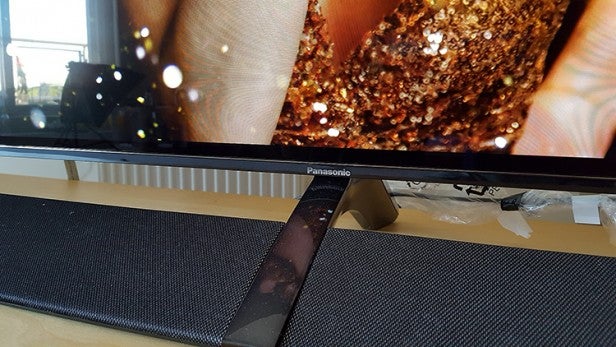
Panasonic TX-65EZ1002B – Design and Build
All OLED panels can cast an amazingly slender silhouette, since no backlight is required. Panasonic has adorned the EZ1002B with a suitably slim bezel featuring rounded corners and a tasteful gleaming grey finish.
The OLED screen itself has been treated with a filter that works very effectively to soak up ambient light. It also drastically reduces the purplish cast that appeared when the 2016 batch of OLEDs were hit by light.
The most striking thing about the styling of Panasonic EZ1002 is its Technics-tuned soundbar, which spans the entire width of the screen. I also like how the OLED panel is held afloat by an arched pedestal. Don’t worry if you own a narrower AV rack – the weight of the setup concentrates at the central pedestal, so you can let the soundbar “hang” off the sides if you have to.
How this harmonises with your existing décor is another matter altogether. If it helps, the soundbar can also be detached for wall-mounting in conjunction with your own audio system.
Related: Panasonic’s entire 4K HDR and HD TV lineup
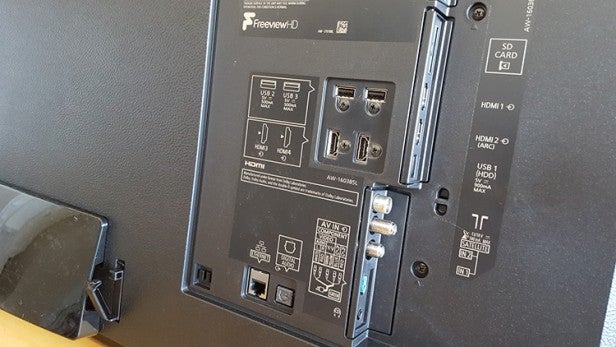
The top half of the chassis comprises only the OLED panel, and so can be made very slim, although the bottom half’s waistline expands to accommodate the television’s processing, connections and miscellaneous components. The grain-textured rear plastic cover exudes an industrial vibe, with robust build quality.
The Panasonic TX-65EZ1002B ships with the same two remote controls included with the company’s top-end televisions over the past few years. The first is a traditional remote which I really enjoy using, thanks to its gratifying tactile feedback, backlit function, logical button layout, sufficient heft, and fingerprint-proof brushed metallic silver finish. The second Smart remote has a curved design, a touchpad, significantly less buttons and voice control capability – for my needs, I barely used it.
Panasonic TX-65EZ1002B – Setup
The default out-of-the-box Normal picture mode on the Panasonic EZ1002B is far from the worst we’ve encountered, but since the Japanese brand has developed a number of highly accurate picture presets with help from post-production specialist Deluxe, you might as well take advantage of them.
According to my measurements, the True Cinema picture mode on the TX-65EZ1002B delivers the most accurate colours without any further tweaking, although Cinema and the Professional modes are not far away. Note that these accurate modes are targetting the luminance levels used by professional studio monitors, and so may look dim in a non-darkened home environment. 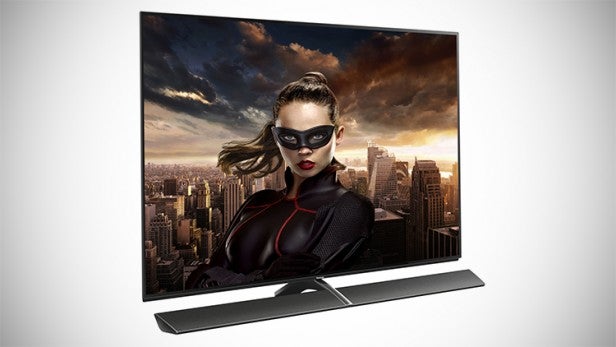
In these picture modes, most of the superfluous video processing (which ironically can degrade the picture if used inappropriately) have been turned off by default. This is good news for owners who value video fidelity and wish to watch films in the manner intended by the director.
One small exception is Intelligent Frame Creation, which is Panasonic’s motion-compensated frame interpolation technology to reduce motion blur. It’s set to the lowest setting of “Min” by default. On previous Panasonic TVs, Intelligent Frame Creation “Min” has been fairly unobtrusive, but the company seemed to have increased its potency (and side effects) on the EZ1002. You might want to turn this off.
Panasonic TX-65EZ1002B – Features
The Panasonic TX-65EZ1002B uses OLED (organic light-emitting diode) technology, which is self-emissive. Unlike LCD-based displays, there’s no need for a constantly-on backlight. Every one of its eight million plus pixels can be switched on and off individually without affecting neighbouring pixels.
The impact of this sort of pixel-level illumination control upon final image quality is huge. First, the Panasonic EZ1002B can render true blacks that won’t be washed out by brighter elements on screen. This heightens the television’s contrast performance (by far the most important contributor to picture quality) greatly, giving a captivating amount of pop and depth to whatever you’re watching.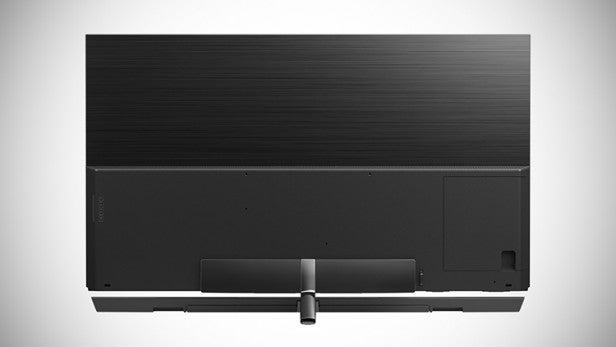
OLED’s self-illuminating characteristic also lends itself to supremely wide viewing angles. The colours and contrast won’t deteriorate even from the sides, making it ideal for use in a large room with many seating positions.
In terms of HDR (high dynamic range), the Panasonic TX-65EZ1002B supports HDR10 and HLG (Hybrid Log-Gamma) formats but not Dolby Vision. HDR10 is the most widespread open standard for HDR currently used for Ultra HD Blu-rays as well as streaming services from the likes of Netflix and Amazon, while HLG is the broadcast HDR standard in the UK and Europe.
Dolby Vision content is not publicly available yet this side of the continent at this time of writing (May 2017). So it’s unknown how much of its theoretical dynamic metadata advantage, which allows for frame-by-frame optimisation, will translate to actual improvement for real-life HDR viewing. Panasonic is confident that it knows its own panels and video processing best, without enlisting Dolby’s help.
There are four HDMI 2.0b inputs, all compatible with HDCP 2.2 copy protection protocol. Like almost every 2017 TV going on sale, there’s no 3D support on the Panasonic EZ1002.
Panasonic TX-65EZ1002B – Performance
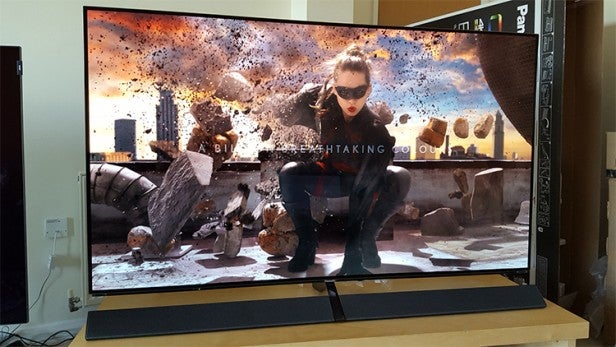 With so many different OLED TVs from various brands hitting the market this year, each one will need its own unique selling point to stand out. The TX-65EZ1002B’s USP is undoubtedly colour accuracy. Put simply, Panasonic’s new flagship OLED is the most accurate consumer-grade television ever to come off an assembly line.
With so many different OLED TVs from various brands hitting the market this year, each one will need its own unique selling point to stand out. The TX-65EZ1002B’s USP is undoubtedly colour accuracy. Put simply, Panasonic’s new flagship OLED is the most accurate consumer-grade television ever to come off an assembly line.
As long as you select the correct picture preset, the Panasonic EZ1002 should faithfully reproduce the different shades and hues in all types of material to portray the filmmaker’s artistic intent with stunning accuracy. Said colours are primarily tuned for viewing in a dark room, but if you wish to adjust the colours to compensate for higher ambient lighting conditions, the company also provides myriad user-accessible calibration controls, including two and ten-point white balance systems, ten-point gamma, as well as a tri-axis advanced colour management system (CMS).
By comparison, Sony’s A1 OLED doesn’t even offer a CMS, whereas the CMS on LG’s OLEDs has a tendency to introduce posterisation artefacts even with relatively gentle adjustments. This makes the Panasonic EZ1002 the most appealing display for video enthusiasts who crave the highest level of colour fidelity. And this is a competitive advantage that in itself won’t be eroded by the lack of Dolby Vision.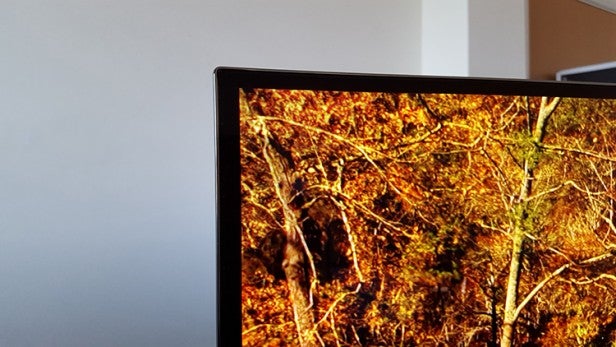
Beyond colour accuracy, the EZ1002B delivered an utterly sumptuous image, as you’d rightly expect from the combination of OLED’s unrivalled contrast expression and Panasonic’s video processing prowess. Near-black handling was as clean and clear as other 2017 OLEDs including the Sony KD-65A1 and the LG B7/ LG C7, so poorly compressed dark scenes didn’t look as noisy or pixellated as 2016 OLED TVs. And without macroblocking and fizziness infecting low-light regions, shadow detail shone through with a sense of clarity and stability not seen on an OLED television before 2017.
For the nitpicky, my Panasonic TX-65EZ1002B exhibited very thin vertical streaks on very dark grey patterns when inspected in a dark room. No OLED TV I’ve tested has been free of this near-black banding – it’s just a fact of life that current OLED panels cannot escape from. Whether you prefer to put up with this or LED LCD’s own uniformity issues such as clouding, backlight bleed, dirty screen effect and banding is your call, but the Panasonic EZ1002’s near-black vertical banding didn’t bothered me in real-world viewing.
For HDR, I measured the Panasonic TX-65EZ1002B’s peak brightness to be 665 nits on a 10% window after calibration to the industry standard of D65 white point. Full-field brightness came in at 165 nits. Within these confines, the TV made a good fist of tone-mapping Ultra HD Blu-rays that are mastered to either 1000 or 4000 nits.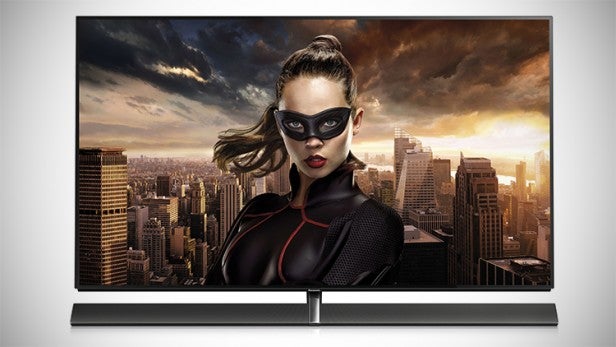
In a side-by-side comparison against the Sony A1, the Panasonic EZ1002 retained more specular highlight detail in 4K Blu-rays that are graded to 4000 nits. For example, the sun in the Arriving in Neverland sequence in Pan, as well as Ben Affleck’s white shirt in Batman v Superman: Dawn of Justice looked more detailed on the Panasonic. The LG 2017 OLED TVs such as the LG B7 and C7 preserved even more highlight detail than the TX-65EZ1002B, but at the expense of lowering overall brightness especially in brighter scenes.
In my opinion, Panasonic’s tone-mapping approach strikes a good balance between brightness and detail. Obviously top-end full-array local dimming LED LCDs can have both (and thus deliver a more impactful HDR presentation), but they inevitably suffer from haloing and blooming artefacts. The Panasonic EZ1002 is free of those problems.
More and more TV makers are recognising the importance of low input lag for the gaming community, and Panasonic is no exception. The EZ1002 features the lowest input lag from the company yet, measuring 25ms for both 1080p SDR and 4K HDR modes. While the Korean brands of LG and Samsung are still slightly faster with 21ms lag on their 2017 models, I really don’t think a 4ms deficit is anything to lose sleep over. By all accounts, the Panasonic EZ1002 is a fantastically responsive gaming display whose blacks and colours remain rich even in HDR mode.
The Technics-tuned soundbar (dubbed “Dynamic Blade Speaker”) on the EZ1002 provides good stereo separation, wide soundstage and clear audio resolution especially for dialogue, although bass response could be better. It’s sufficient for day-to-day viewing, but for serious movie watching there’s no beating a dedicated home cinema system.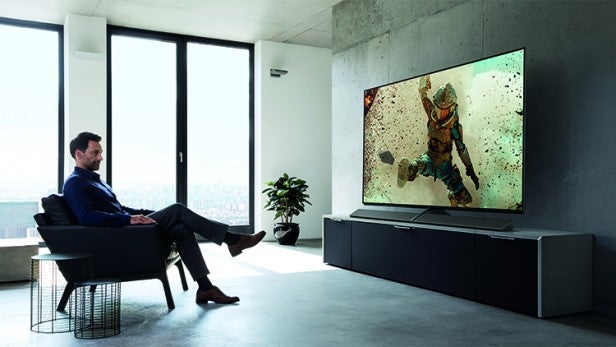
Should I Buy The Panasonic TX-65EZ1002B?
At £6999, the Panasonic TX-65EZ1002B is certainly not cheap. But you are paying for class-leading colour accuracy that wouldn’t look out of place in a professional mastering studio. Indeed, the EZ1002 is equipped to handle the stresses of Hollywood colour grading. Out of the box and with the right picture modes, my review sample delivered some of the most accurate greyscale and colours I’ve ever measured on a consumer television for dark-room viewing.
The other elephant in the room is Dolby Vision… should a television be penalised for not supporting this proprietary dynamic metadata system? Probably not, and due to the relative lack of Dolby Vision content in the UK, it’s too early to make a definitive judgement at this stage. But it is something to keep in mind for anyone with an eye for futureproofing.
Other OLED alternatives include LG’s 2017 models and the Sony KD-65A1 which are only be cheaper, but also support Dolby Vision. If maximum HDR impact is your thing, then the high-end LED LCDs such as the Samsung QLED Q9 may suit your needs better. None of these, however, can match the colour accuracy of the Panasonic EZ1002.
Verdict
If you can forgive its high price and lack of Dolby Vision, the Panasonic TX-65EZ1002B is a fantastic homage to colour accuracy and video fidelity.
How we test televisions
We test every TV we review thoroughly over an extended period of time. We use industry standard tests to compare features properly. We’ll always tell you what we find. We never, ever, accept money to review a product.
Trusted Score
Score in detail
-
Features 8
-
Value 8
-
Smart TV 8
-
Image Quality 10
-
Design 9
-
Sound Quality 8

